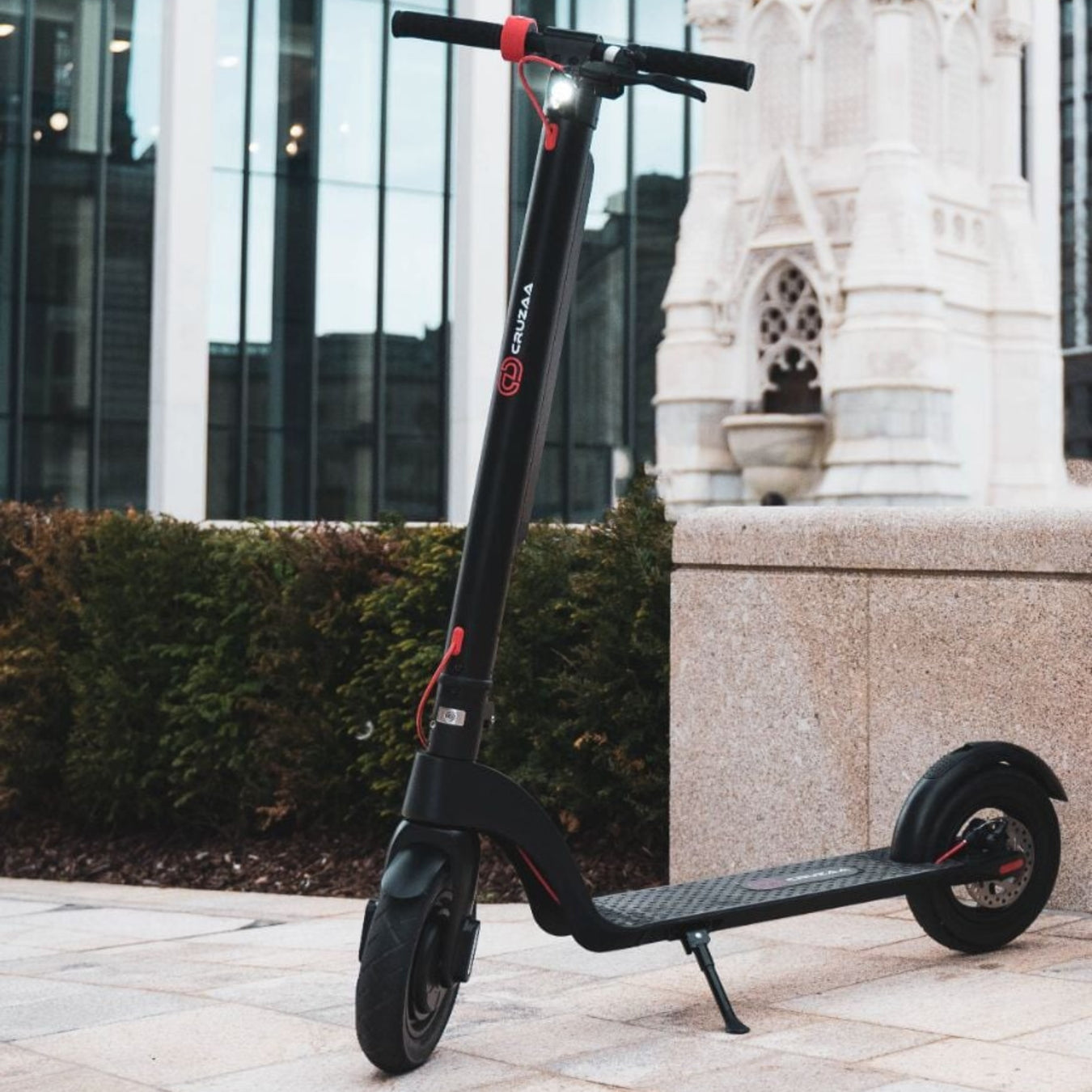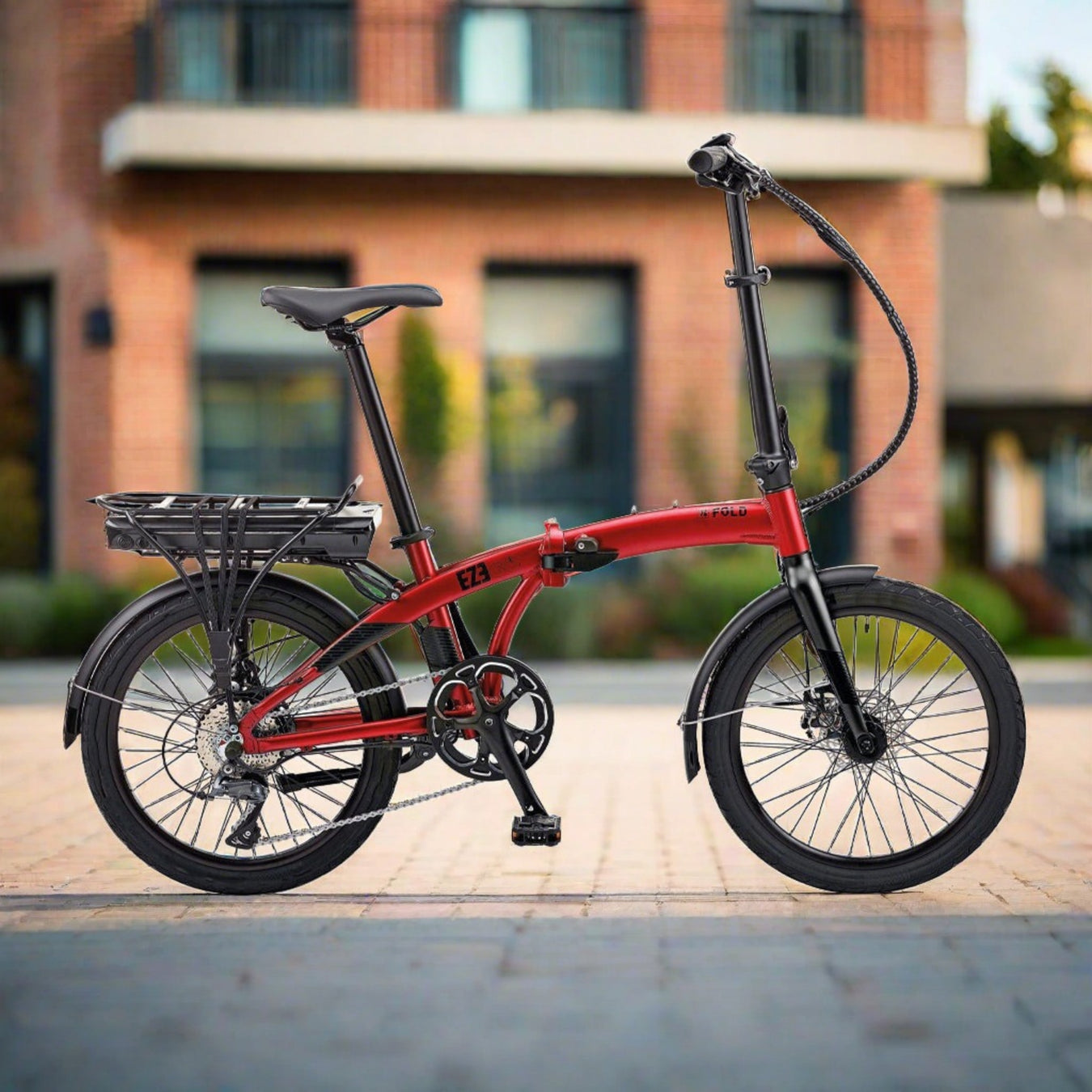Available Mon-Sun

Your Buying Guide For Mountain Bikes
If you're in the market for a new mountain bike in the UK, there are a few things you'll want to consider before making a purchase. Here's a buying guide to help you find the right mountain bike for your needs:
-
Determine Your Riding Style: Mountain bikes are designed for a variety of riding styles, including cross-country, trail, all-mountain, enduro, and downhill. Consider the type of terrain you'll be riding on and choose a bike that's designed for that style of riding.
-
Consider the Frame Material: Mountain bikes are typically made from aluminum, carbon fiber, or steel. Aluminum is lightweight and affordable, carbon fiber is even lighter and stiffer, and steel is durable and provides a comfortable ride. Choose a frame material that meets your needs and budget.
-
Look for the Right Suspension: Mountain bikes have either front suspension (hardtail) or both front and rear suspension (full suspension). Full suspension bikes provide better traction and control on rough terrain, but they're also heavier and more expensive. Consider the type of riding you'll be doing and choose the right suspension for your needs.
-
Check the Wheel Size: Mountain bikes come with different wheel sizes, including 26", 27.5", and 29". Larger wheels provide better traction and stability, but they're also heavier and slower to accelerate. Choose a wheel size that's appropriate for your height and riding style.
-
Consider the Components: The components on a mountain bike can greatly affect its performance and durability. Look for high-quality components from reputable manufacturers, such as Shimano or SRAM. Pay attention to the brakes, gears, and tires, as these are the most important components for off-road performance.
-
Test Ride the Bike: Before making a purchase, take the bike for a test ride to see how it feels and handles. Most bike shops will allow you to test ride a bike before you buy it, so take advantage of this opportunity to ensure that the bike meets your needs and feels comfortable to ride.
How to determine your mountain bike riding style
Determining your mountain bike riding style is important when selecting a bike that's best suited for your needs. Here are some factors to consider when figuring out your riding style:
-
Terrain: What type of terrain will you be riding on most often? Cross-country riders generally ride on smoother, less technical trails with some climbs and descents, while downhill riders tackle steep, technical descents with jumps and drops.
-
Distance: How far do you plan to ride? Cross-country riders typically cover longer distances and may participate in endurance events, while downhill riders focus more on short, intense runs.
-
Speed: How fast do you like to ride? Cross-country riders tend to focus on speed and efficiency, while downhill riders prioritize control and handling at high speeds.
-
Jumps and Drops: Do you enjoy jumps and drops? Riders who enjoy hitting jumps and drops will want a bike with good suspension and sturdy components, as well as a frame that's designed for downhill riding.
-
Technical Features: Do you enjoy riding technical features such as rocks, roots, and drops? Trail riders often encounter technical terrain and need a bike with good suspension and handling, while cross-country riders may prioritize efficiency over technical handling.
Which frame material is best suited to my mountain bike riding style?
When choosing a mountain bike frame material, there are several factors to consider. Here are some of the most important ones:
-
Weight: One of the main factors to consider when choosing a frame material is weight. A lighter frame can make it easier to climb hills and maneuver the bike, but it may also be less durable.
-
Strength: The frame material should be strong enough to withstand the stresses of mountain biking. Steel frames are known for their strength and durability, while aluminum frames are lightweight and reasonably strong.
-
Stiffness: The stiffness of the frame can affect how the bike handles and feels. Carbon fiber frames are known for their stiffness and responsiveness, while steel frames are more flexible and can provide a smoother ride.
-
Cost: Different frame materials come at different costs, with carbon fiber being the most expensive, followed by titanium, steel, and aluminum.
-
Maintenance: Some frame materials may require more maintenance than others. For example, steel frames are prone to rust and may need to be treated to prevent corrosion, while aluminum frames may be more prone to damage from impacts.
-
Ride quality: The ride quality of a bike can be affected by the frame material. Carbon fiber frames are known for providing a smoother ride, while steel frames can be more forgiving on rough terrain.
Ultimately, the choice of frame material will depend on your riding style, budget, and personal preferences. If you're a beginner or on a tight budget, an aluminum frame may be a good choice, while more experienced riders or those looking for a higher-end bike may prefer carbon fiber or titanium. Be sure to consider all of these factors when choosing a mountain bike frame material.
Which suspension should you choose for mountain biking?
There are two main types of suspension systems used in mountain bikes: front suspension (also known as a "hardtail") and full suspension. Here's an overview of each type:
-
Front Suspension (Hardtail): Hardtail bikes have suspension only on the front fork, which helps to absorb shocks and bumps on the trail. This type of suspension is simpler, lighter, and less expensive than full suspension, and can be ideal for cross-country riders who prioritize speed and efficiency over technical handling. Hardtail bikes are also a good choice for beginners or riders on a budget, as they can provide a solid introduction to mountain biking without breaking the bank.
-
Full Suspension: Full suspension bikes have suspension on both the front fork and the rear shock, which provides greater comfort and control on rough terrain. This type of suspension is more complex, heavier, and more expensive than hardtail suspension, but it can be ideal for riders who prioritize technical handling and want to tackle more challenging terrain. Full suspension bikes are also a good choice for riders who plan to ride for longer periods of time or who have a history of back pain or other injuries.
Full suspension bikes can be further classified into the following subcategories:
-
Trail Bikes: These bikes are designed to be versatile and can handle a variety of terrain. They have a balanced suspension system that provides both efficiency and comfort, making them a good choice for intermediate riders.
-
Enduro Bikes: Enduro bikes are designed for riders who want to tackle more challenging terrain, including steep climbs and descents. They have a longer suspension travel than trail bikes, making them more capable on rough terrain.
-
Downhill Bikes: These bikes are designed for riders who want to tackle the most challenging terrain, including steep descents and jumps. They have the longest suspension travel of any mountain bike, providing maximum control and stability at high speeds.
Overall, the type of suspension you choose will depend on your riding style, skill level, and the type of terrain you plan to ride on. Consider your needs and preferences carefully when selecting a suspension type, and test ride different bikes to see which one feels the most comfortable and capable for you.
By following these tips, you'll be able to find the right mountain bike for your needs and enjoy many years of off-road riding in the UK.






